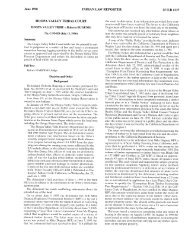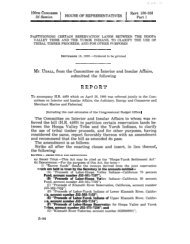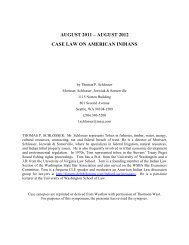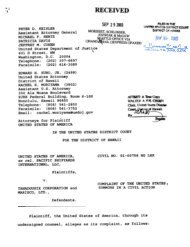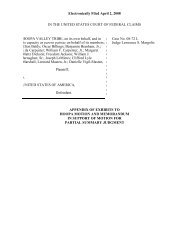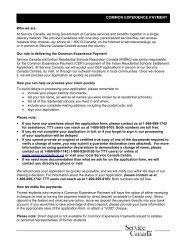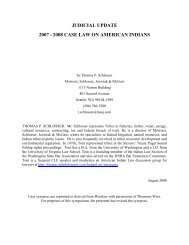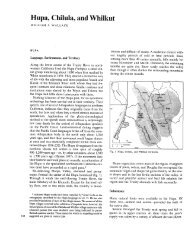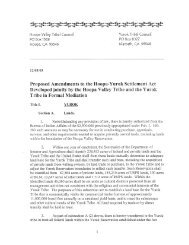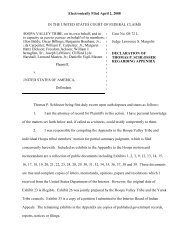Yurok Tribe's Motion to Dismiss U.S. Third Party Complaint
Yurok Tribe's Motion to Dismiss U.S. Third Party Complaint
Yurok Tribe's Motion to Dismiss U.S. Third Party Complaint
Create successful ePaper yourself
Turn your PDF publications into a flip-book with our unique Google optimized e-Paper software.
Case 1:08-cv-00072-TCW Document 39 Filed 11/07/2008 Page 4 of 16<br />
the Indians of the Addition.” Short v. United States, 661 F.2d 150, 152 (Ct. Cl. 1981) (Short<br />
II) 3/ These revenues were substantial: “From March 27, 1957 <strong>to</strong> June 30, 1974, $23,811,963.75<br />
in tribal or communal monies was distributed per capita <strong>to</strong> the [Hoopa Valley] <strong>Tribe's</strong> individual<br />
members.” Short v. United States, 12 Cl. Ct. 36, 41 (1987) (Short IV).<br />
The Short Litigation. In 1963, individual Indians who were excluded from the<br />
Secretary’s distributions (mostly <strong>Yurok</strong>) brought suit against the United States, as trustee and<br />
administra<strong>to</strong>r of the timber resources of the Reservation, “seeking their shares of the revenues<br />
the government had distributed <strong>to</strong> individual Indians of the Reservation.” Short II, 661 F.2d at<br />
152. In 1973, the Court of Claims held that “the Square and the Addition <strong>to</strong>gether constituted a<br />
single reservation, that all the Indians of that Reservation were entitled <strong>to</strong> share in all of its<br />
revenues that were distributed <strong>to</strong> individual Indians (including the timber revenues from the<br />
Square), and that the plaintiffs who were Indians of the Reservation were entitled <strong>to</strong> recover the<br />
monies the government withheld from them.” Id.<br />
Notwithstanding the Court’s clear holding, the Bureau of Indian Affairs continued<br />
<strong>to</strong> distribute the timber revenues only <strong>to</strong> enrolled Hoopa Valley Tribe members and no one else.<br />
See Short v. United States, 28 Fed. Cl. 590, 591 (1993) (Short VI). “After the 1973 decision, the<br />
BIA began <strong>to</strong> distribute only thirty percent of the unallotted Reservation income because it<br />
estimated that Hoopa Valley Tribe members comprised thirty percent of the Indians of the<br />
Reservation.” Id. The BIA retained the remaining seventy percent in an escrow fund, which<br />
came <strong>to</strong> be known as the “Short escrow fund” or the “seventy percent fund.” Id. The escrow<br />
fund grew <strong>to</strong> over $60 million by the time the Court decided Short VI in 1993. Id. at 37.<br />
3/ The official roll of the Hoopa Valley Tribe “limit[ed] enrollment <strong>to</strong> allottees of land on the Square, nonlandholding<br />
‘true’ Hoopas voted upon by the Tribe, and long-time residents of the Square of a prescribed degree of<br />
Hoopa blood, descended from natives of the Square. Short I, 486 F.2d at 562.<br />
\\\DC - 024734/000003 - 2815011 v2<br />
4



